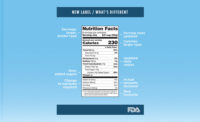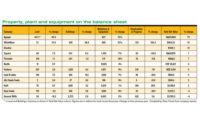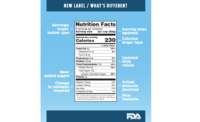The Dairy Index, an annual report by the global packaging and processing equipment supplier Tetra Pak, states that global demand for milk is set to surge by 36% in the next decade, largely due to population growth, rising prosperity and urbanization in Africa, Asia and Latin America.
But, according to the report released in October, milk supply and demand is imbalanced across the world. The rising demand in emerging dairy markets is unlikely to be fulfilled by locally produced raw milk, while developed dairy markets producing a milk surplus, such as the United States, face the challenges of competing for exports and responding to falling domestic consumption.
“The predicted surge in global demand offers a huge opportunity for dairy companies in developed markets like the U.S. to export powder and ambient liquid dairy products to growing economies,” said Dennis Jönsson, president and CEO of Tetra Pak Group. “However, to ensure long-term success, these producers need to balance the ‘quick wins’ of export against the requirement to continue to grow their domestic markets.”
Less than 50% of American adults now drink milk, driving 2013 U.S. milk sales to their lowest point since 1984. This decline in consumption presents additional export opportunities, with most growth expected to derive from growing markets such as Mexico and China. However, although there are significant opportunities to export, producers must not lose focus on the domestic market. Product diversification, innovation and brand differentiation will be crucial in the face of changing consumer demographics, behaviors and lifestyles.
As milk producers in established markets look for new ways to respond to a boom in demand in the developing world, they are facing the mirror challenge of falling consumption at home. In Europe and in North America, for example, changing lifestyles and dietary requirements have caused a significant shift in traditional consumption habits. White milk consumption in Western Europe has fallen 0.8% in the last three years.
To maintain a viable business in these markets, and drive value into the sector, dairy producers are shifting towards value-added products that deliver extra nutrition, flavor or other lifestyle benefits, which have greater consumer appeal.
Opportunities in partnerships
Meanwhile, rapidly rising demand in many less-established markets for milk products towards the more basic end of the spectrum is creating greater incentive for local dairy companies to increase their own production.
To sustain high quality raw milk supply, these companies are reaching out to the export countries to form partnerships. At the same time, however, with competition for raw milk becoming ever-more fierce and traditional milk exporting countries reaching production capacity, developing nations are coming under increasing pressure to invest in greater self-sufficiency. In doing so, of course, they will need to address challenges related to the environment, natural resources and the availability of expertise.
Several markets have already begun that journey. For example, despite its hot and arid climate, more than half of Saudi Arabia’s domestic milk consumption is now met from local supply, and it has built a strong export business to countries across the Middle East.
Global white milk consumption is forecast to rise by 1.8% CAGR (compounded annual growth rate) between 2013 and 2016, from around 212 billion liters to around 223 billion liters, exceeding the growth of 1.2% CAGR between 2010 and 2013. However, the expected increase in demand from places like India, China, the Middle East and Africa is unlikely to be met locally, with production in these markets predicted to rise more slowly.
What’s more, supplies from traditional milk export countries will struggle to keep pace with this growing demand, creating a supply/demand gap within the next decade. Through this period, dairy companies will continue to enjoy major growth opportunities. However, the rising demand for healthy, nutritious and convenient products, together with the squeeze on milk supplies and inevitable price-rise consequences, points clearly to the need for greater product innovation.
As top milk exporters in developed countries reach their production and processing limits, developing countries reliant on imports will also need to invest more to boost their milk self-sufficiency. In doing so, they must overcome the challenges of climate, limited availability of land, water, feed and cattle and dairy expertise.
Meanwhile, in an effort to make milk stretch further and get more value per liter sold, dairy companies will need to make the most of milk’s versatility by using it in innovative ways in new products and formulations. This will include combining milk with other ingredients such as juice and cereal, and tapping into milk alternatives, such as whey.
In an indication of how the situation is evolving, between 2011 and 2013 global milk supply was slightly ahead of demand. However, by 2018 supply will struggle to meet demand due largely to growth from Asia and Africa, where production is limited by physical constraints such as the climate.
The global import of liquid and powdered milk (excluding trade among the EU countries) is expected to be driven by China during 2014-2024. This is based on the fast increasing domestic demand and trust in the quality of imported products. China is poised to double its share of global milk imports in the next 10 years.
However, it is expected that a focus on “home-grown” milk in China could emerge over the coming years, with the industry and the government encouraging the consumption of locally produced dairy products. This barrier could pose a future risk to markets which are currently heavily reliant on exports to countries like China.
A need to add value
With white milk increasingly viewed as a commodity due to aggressively low pricing by retailers, dairy companies are looking for new ways to add value, such as differentiated packaging and highlighting functional and nutritional benefits.
In the United States there is promising growth in functional and differentiated dairy products that meet people’s health and lifestyle needs, including organic milk, dairy alternatives and dairy products with a value-added nutritional focus. Smoothies, lattes and breakfast shakes are also creating opportunities for growth. Among functional products, demand is growing for sports milk and drinks designed to help people manage their weight. Protein-enhanced nutritional drinks sold in portion packs are targeting health-conscious adults.
Dairy processors also are focusing on innovation and developing other liquid dairy products (OLDP), which are predominantly targeted at younger adults, who are more likely to be open to new products, especially at a time when their milk consumption is lower than other groups. One example of this is through the convergence of categories, such as milk and juice or milk and cereal, which are emerging across the U.S. market and proving popular with consumers.
Yogurt and smoothies are gaining traction domestically. Per capita, yogurt consumption has nearly doubled in the past decade, which has driven large scale investments, such as PepsiCo and Muller opening a new $350 million yogurt factory in June 2013. Meanwhile, smoothies are also set for strong growth in the next two years as an alternative to 100% fruit juice options. This is a reflection of the fact that the sector can prosper if it hits a competitive price point and offer benefits that appeal to parents.
The breakfast shake product space is also emerging, with products such as Post’s Goodness to Go, General Mills’ B’Fast and Kellogg’s Breakfast to Go. There is certainly potential for further growth in this area.



